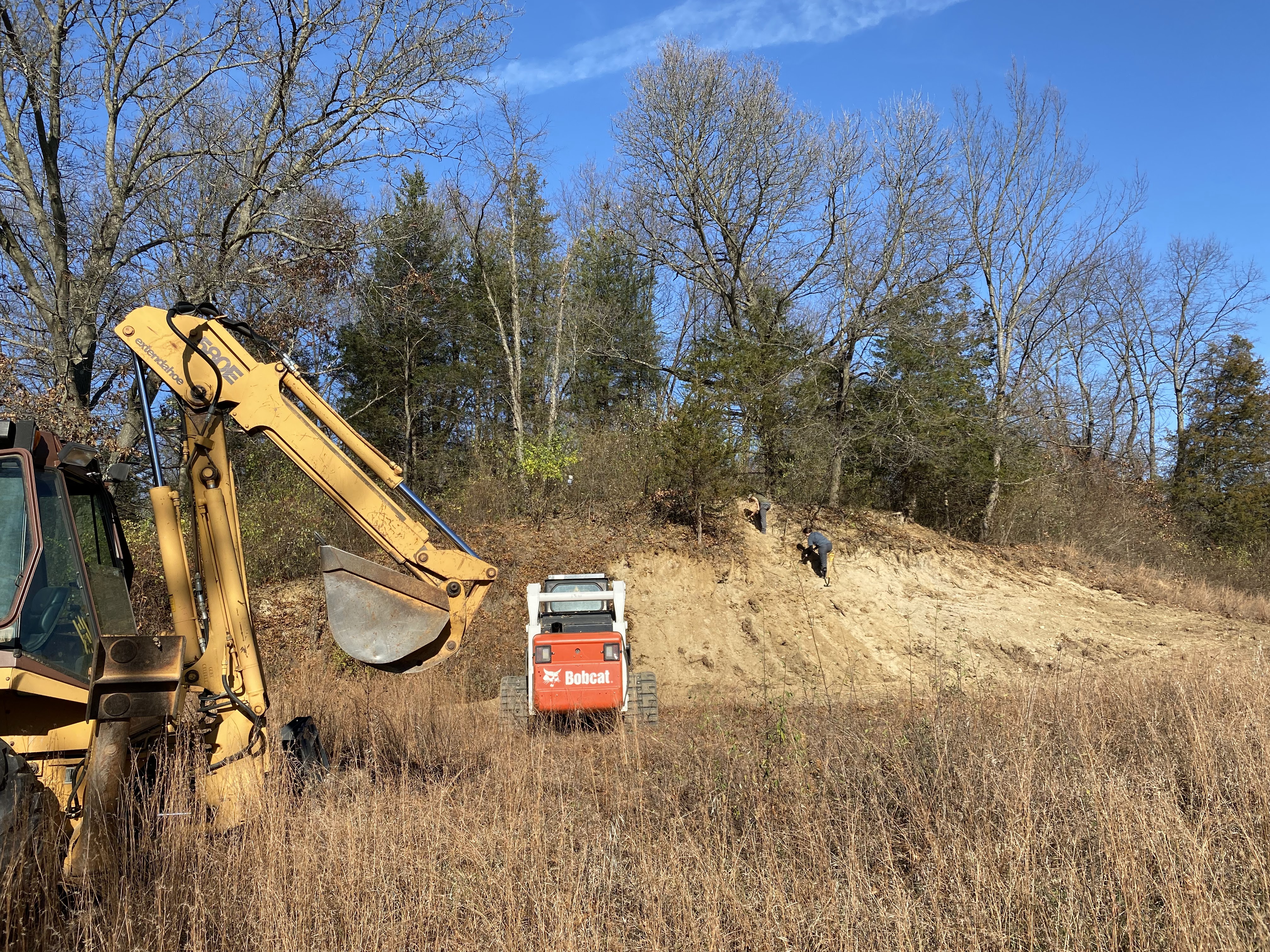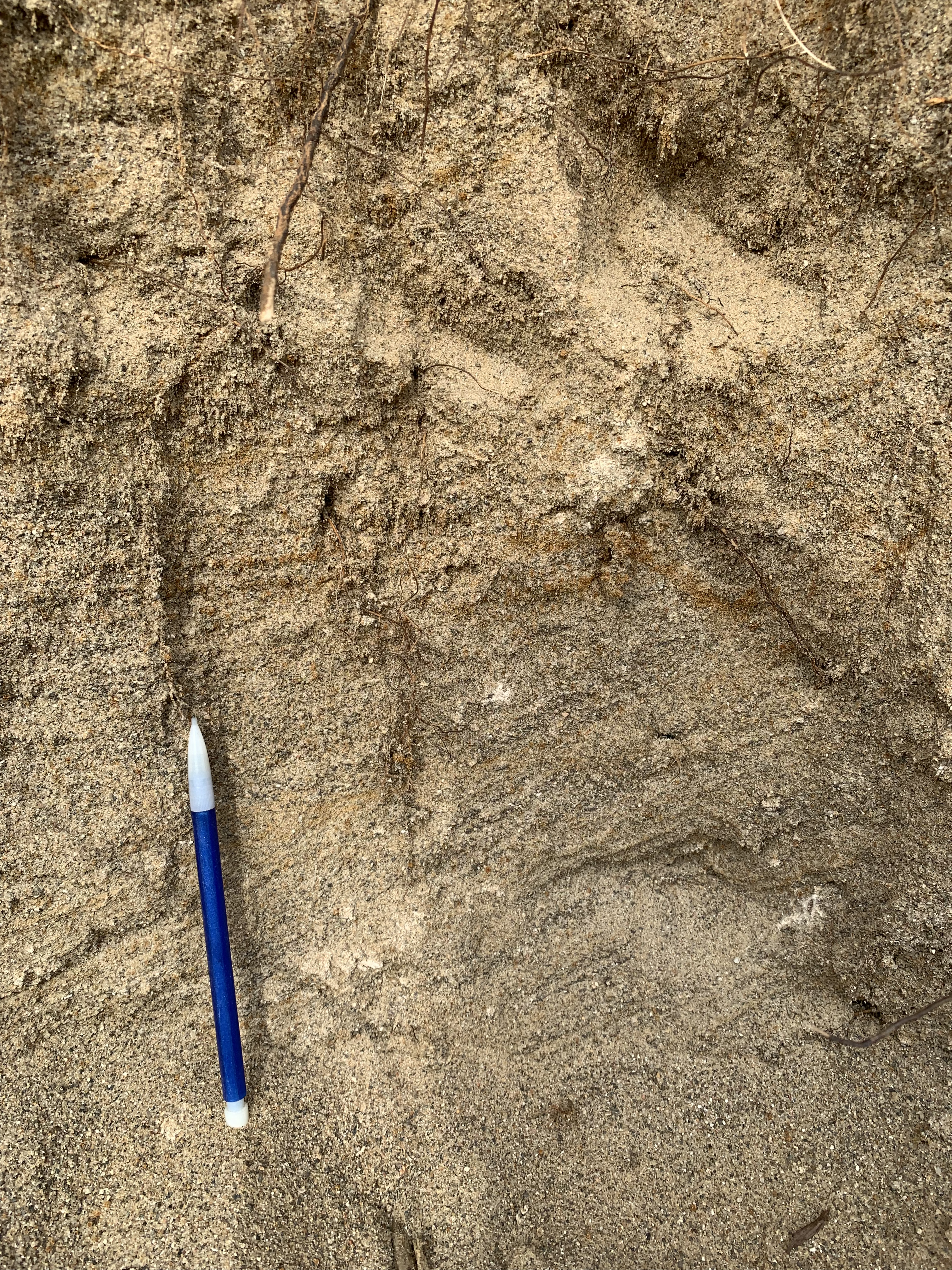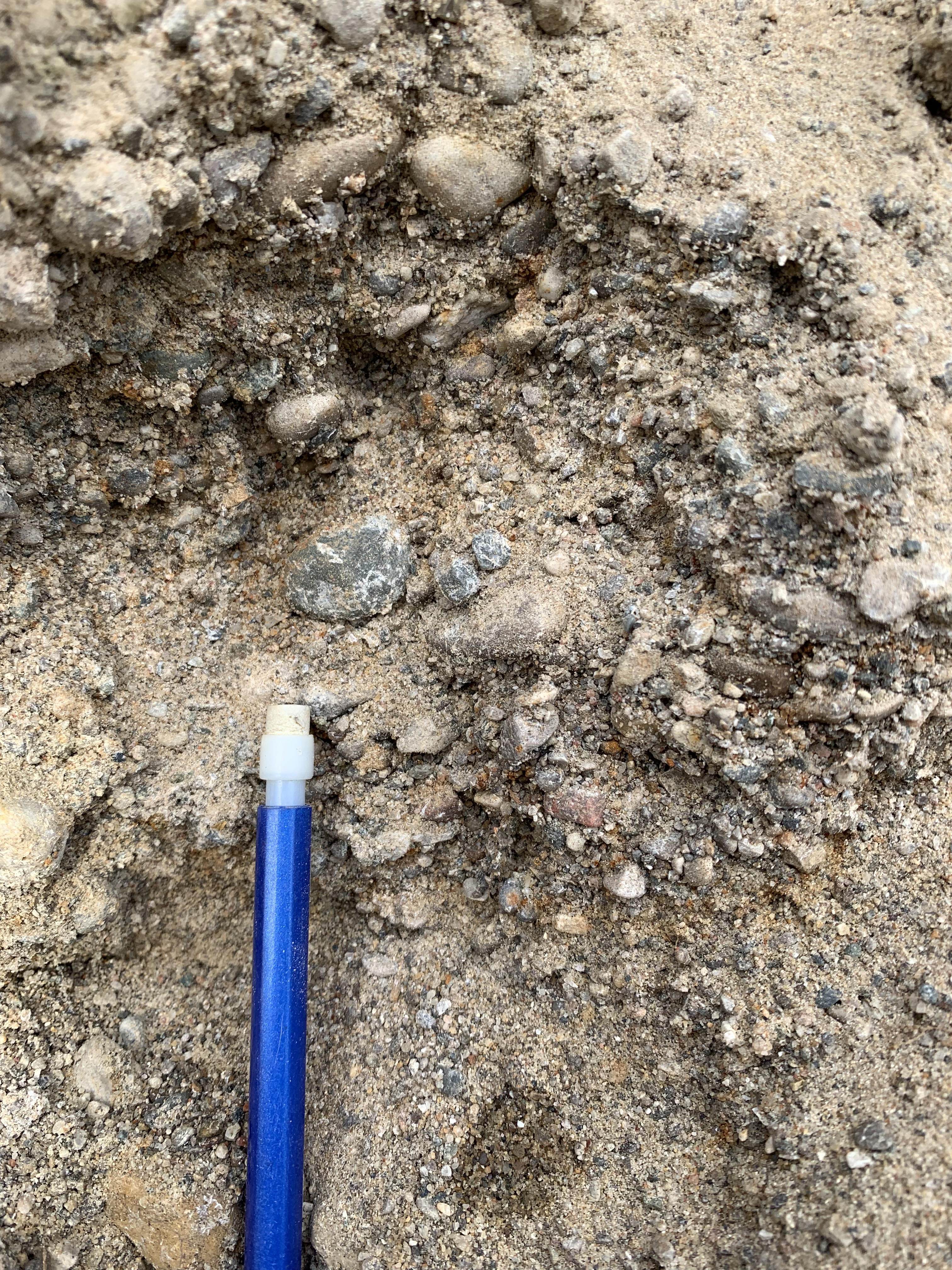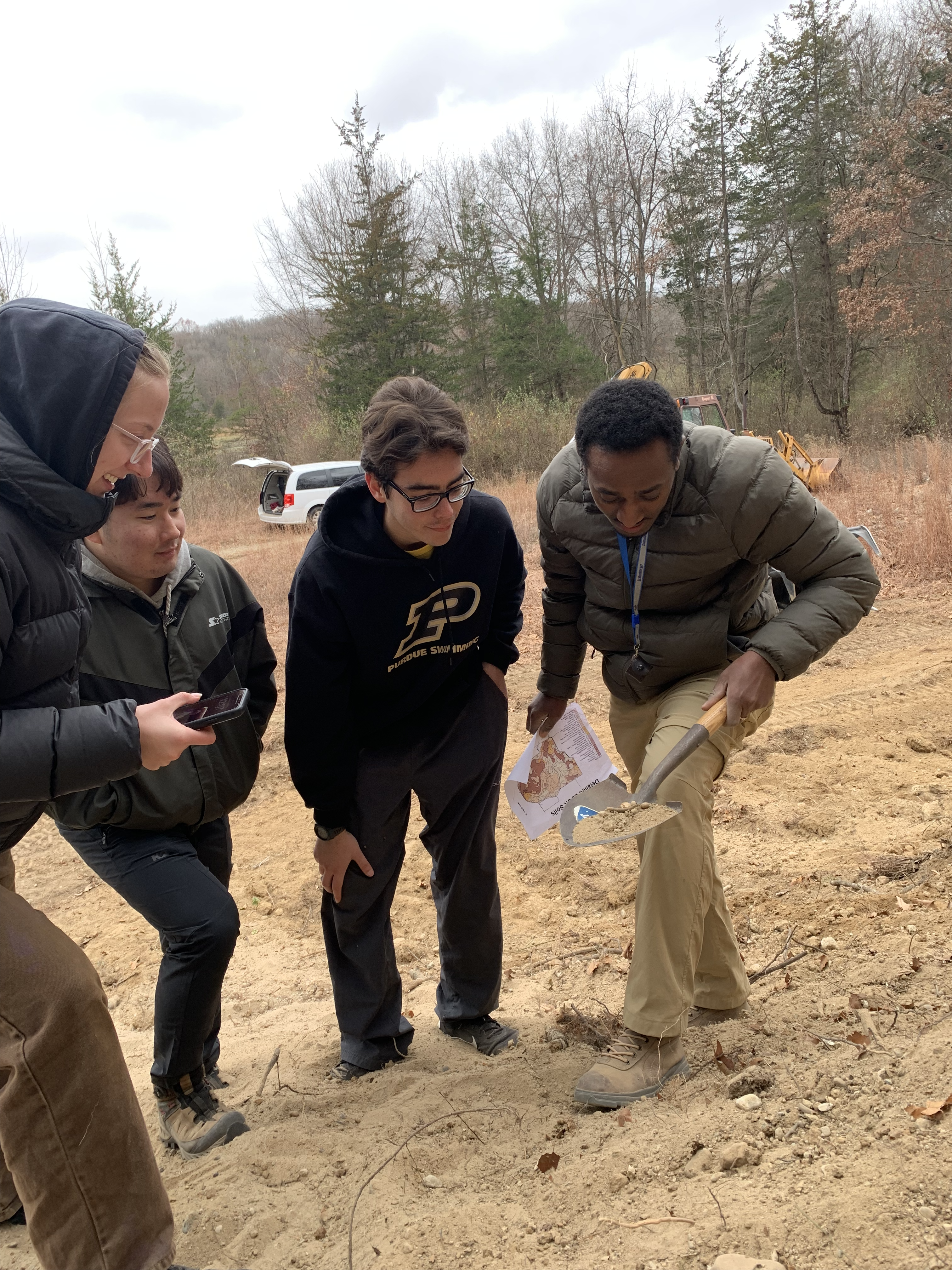For the past couple of years, we’ve been working on a local field site, the Edwin S George Reserve, just north of Ann Arbor, Michigan. Tyler Huth and I initially found pedogenic-like carbonate rinds on the bottoms of clasts in a soil pit, in what looked like a Bk horizon. Calcic soils are unusual in a wet place like Michigan. We wanted a bit more sedimentologic context for the “calcic soil” - what is the parent material? What is this strange small hill that is hosting the soil?
The site manager at the George Reserve agreed to help by removing a ton of invasive vegetation and material from the cut slope of the old gravel quarry, using some heavy equipment to speed up the process.

An excavator is ready to help us get rid of pesky vegetation

Approximately one hour later, the sediments have been exposed!
What did we find?
My working hypothesis is that the small hill is a kame deposit or an extension of the main esker. The sediments are stratified, the clasts are well rounded. The evidence points to a fluvio-glacial deposit.
Cross bedding in fine to medium sand
the lower gravel unit. Rounded clasts covered in secondary carbonate, about 3 meters below the ground surface


Capping all of these deposits is indeed a mature soil, with a pronounced Bt (clay) horizon above a Bk (calcic) horizon.

The calcic horizon (I’m pointing at it) is below the color change associated with clay accumulation in the Bt horizon
The next day, a group of graduate and undergraduate students from IsoPaleoLab helped dig out and think through the key evidence at the outcrop.

A tough group of peer reviewers looking at the sand unit
It was a treat to think about depositional environments and soil formation processes right in our backyard on a warm fall day. There’s plenty of carbonate everywhere on the outcrop - pedogenic rinds, diffuse carbonate, and rhyzoliths associated with still-alive plants.
The weather had turned colder, and undergraduates Miriam and Matthew were wishing they had packed gloves to be able to hold the (cold) metal auger. They’ve been taking the lead on sampling at the Reserve all semester.

Augering for soil water samples